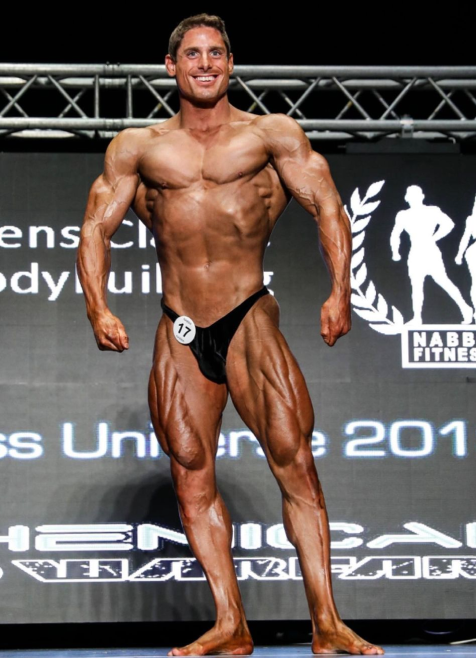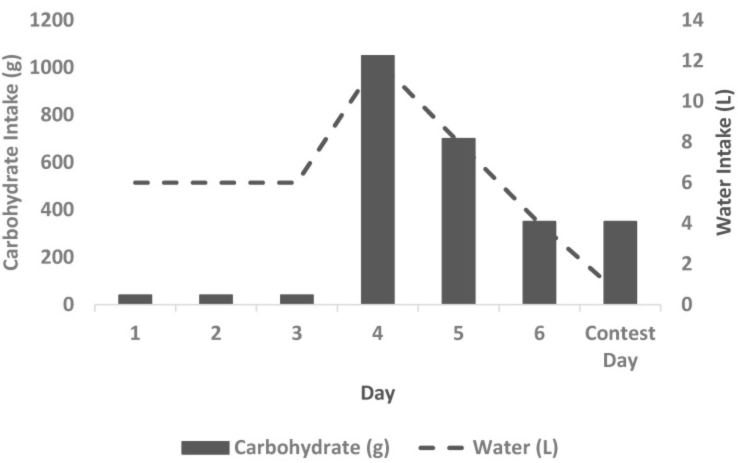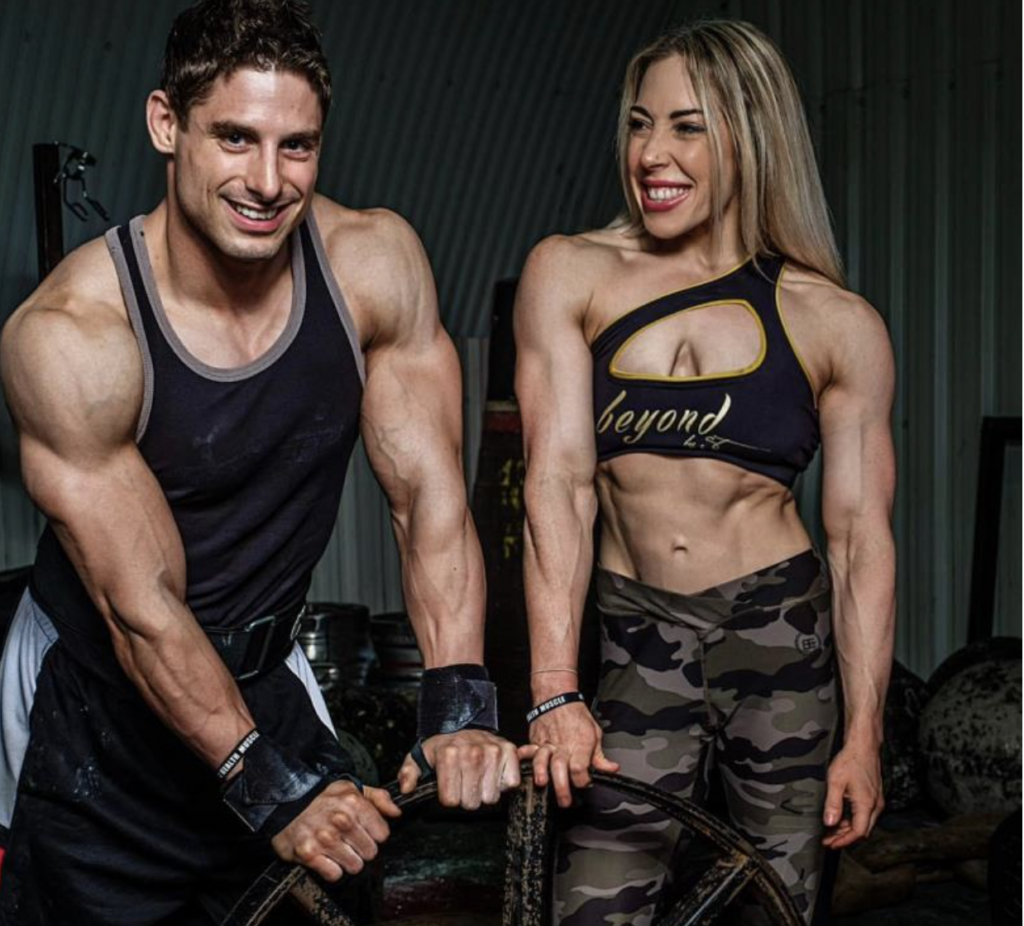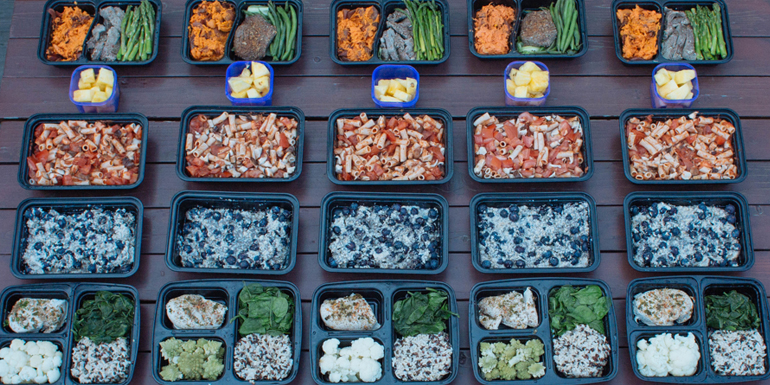Peaking: What You Need To Know
Dr. Andrew Chappell BSc (Hons), MSc, PhD, WNBF Pro
What is peaking? How does it work? Does it work? What do people do? How many times can you peak? Who should peak? These were questions along with many more I had when I got into competitive bodybuilding. Some 20 years later I’ve read several books on the topic and publish a number of scientific articles on the sport of bodybuilding. I’ve published specifically as well on the art of peaking and much of what is written here is based on that research alongside my own experience of prepping athletes for shows. The following article should be considered a framework for those looking to put together their own peaking plans or for others just wishing to understand a little more about the topic.
For those seeking a more in depth overview of the scientific basis of peaking and a guide then I suggest you check out the two scientific articles below. The first is an original research article I published detailing the strategies that athletes use to get in shape for bodybuilding shows. In the article we offer a scientific basis for how and why peaking might work alongside common strategies and a framework of how you might peak. The second article expands on much of what we did in the first paper and offers some more recommendations on why certain strategies may work along with considerations around who should peak. For most however this article on peaking considerations will be comprehensive enough and should hopefully lead to you asking more questions and lead to more experimentation! As always If you find this content useful and you believe I may be able to help you with your own peaking goals then go to the sign up button on this website and we’ll arrange a chat
Chappell & Simper2018. Nutritional Peak Week and Competition Day Strategies of Competitive Natural Bodybuilders. 6(4): 126.
Guillermo Escalante et al . 2021. Peak week recommendations for bodybuilders: an evidence based approach. BMC Sports Sci Med Rehabil. 13 (1):68.

Why Peak?
The goal of peaking is to try and produce the best version of yourself for the stage. Or the version that is likely to be the most competitive. Competitors should consider that shows are judged over three rounds, symmetry, muscularity and free posing and the best package might mean not being 100% ripped, some might look better at 5% rather than 3% BF. If you were to define peaking then you might come up with something like this:
“Peaking: The goal of creating a physical appearance of yourself that is more competitive than if you were to make no modification to your regular dietary of training regime.”
Peaking therefore involves changing things from the regular plan, that usually means the manipulation of: carbohydrate, protein, fats, water, and electrolytes. It also means the manipulation of training and rest variables such as: cardio, rep ranges, frequency, volume, intensity and rest periods. Peaking Plans can be anything from between 21 days prior to 1 day/on the day principles. Although the one-week protocol is probably the most common. Moreover even where there’s little need for peaking or a coach has little belief in the process, most athletes will have the desire to peak. What is worth stating though is that athletes not in shape should avoid complicated peaking processes. Moreover the desire to peak by athletes reflects the almost mythical status holds in bodybuilding culture. It’s definitely considers an important/special time in an athletes prep, which can fill them with confidence, even if in some cases some peaking plans don’t necessarily work too well. Finally peaking needs to be and should be tailored to the individual, grand plans and templates can be useful but there still has to be some room for manoeuvre in plans.
Now as mentioned above, peaking involves juggling multiple concepts and if you’re unsure about how to manipulate these different variables or how each is likely to interact, or if your athletes seem unsure then it’s best to keep plans simple. Peaking however does seeks to::
- Lower your bodyfat levels (via days of carb depleting)
- Reduce any subcutaneous water
- Maximise muscle fullness
- Minimise any stomach bloating
- Minimise fatigue, for a healthy looking fatigue
- Provide the athlete with enough energy to be able to perform when they are on stage
- In competitions that have to sections, peaking needs to consider both the morning and evening component.
Whatever you decide to do though remember your spinning plates, so the more complex your plan is the more room there is for things to go wrong!

The Science Bit
There are lots of ways a person might decide to peak, but here we’re referring to the method which is the most common and is a variation on classical carbohydrate loading. I first came across this method in Chris Aceto’s book Championship bodybuilding. This method seeks to do the following:
- Take advantage of utilise a concept referred to as muscle glycogen super compensation
- This loads the muscles with glycogen and water to create an appearance described as full
- Draws muscle from the extracellular space into the muscle to help create the dry look
Muscle glycogen supercompensation is achieved following three to four days of carbohydrate depletion which primes the muscles to be sensitive to storing extra glycogen. : Low carbohydrate diets, usually between 40 to 60g per day, (for 3 to 4 days) is then followed by 2 to 3 days of carbohydrate loading.
Carb Depletion
Increased aerobic activity and isometric poses, Circuit style workouts usually with Increase the rep ranges for the upper body muscles.
- Goal is to deplete the muscles of their glycogen stores
- Circuit training is common because of it’s high lactate accumulation
- Recovery is often compromised follow a low carbohydrate diet so legs are often ceased to be trained, while light weights and high reps are used.
Water intake usually kept consistent with the regular intake, although some may increase water intake to help satiation from a low calorie approach. Now it’s not uncommon for people to increase their fat intake to offset the loss of carbohydrate from the diet, I’d say this is a mistake, since you are looking to deplete, and three days of low carb dieting can be excellent to bring your bodyfat levels down even lower closer to a show.
Carb Loading
This phase people will want to eliminate all sweeteners, any processed foods, or carbonated drinks. Fibre is also kept low, both to ensure there is no interference with carbohydrate absorption, but also to remove bloating by contest day. Thereafter the goal is to increase the carbohydrate content 3 fold on what the regular intake is (or between 9 to 12g per kg bw), for the first two days, before lower the intake to regular intake by the third day. In terms of loading, front loading is probably safter, it also makes more sense to go fast digesting carbohydrates and simple ones, to get the volume in. Remember your going to need carbs to satisfy your daily energy intake alongside the load, so that’s upwards of 900 – 1100 g for some athlete’s.
- The depletion causes increase in the intracellular levels of glycogen synthesising enzymes
- Increase in glucose transporters on the surface of the muscle cell?
Don’t expect to look good after loading a ton of carbs in on day 1 and day 2, you’ll look tiered, bloated, watery and stressed. Eating all that food is hard work after all, so is drinking all the water.
Water
One of the things your going to try and do is load water to encourage polyurea, take some multivitamins alongside the loading as well to encourage this process. Remember you need fluid for the day, fluid for your loading, around about 3 ml per g of carbohydrate, and fluid to encourage polyurea, Guys will drink between 6 to 12 L of water over the first few days. Then limit it the night before and might even restrict on the day.
Sodium
Sodium is required as part of the Sodium dependent glucose transporters, to absorb carbohydrates so athletes should not reduce their salt intake while carbohydrate loading and may want to consider increasing sodium (although sodium may cause an athlete to hold water), On the day of the competition, you may want to increase sodium to help facility a better on stage pump (fullness).
On the face of things it doesn’t sound overly complicated and the diagram included helps describe the concept quite well I believe. There however a number of practical considerations that need to be considered.

Practical Considerations
- Different classes have different looks. Bodybuilders seek to be as dry, full and hard looking as physically possible, while bikini athletes are only looking for toned muscle rather than a shrink-wrapped look. When it comes to how much condition, remember genetics matter. Some people may look good being 95 or 97% ready rather than 100% peeled, just because of body fat distribution. I’ve seen athletes lose nice round shoulders and arms gunning for those low body fat numbers when they’d have been better placed staying a little softer.
Human Element
Knowledge: some athletes may lack the organisational skills, or nutritional education to effectively carry out peaking strategies compared to more experienced athletes. Intelligence does come into this because people can have lots of questions and sometimes they don’t always understand the answers. Moreover, in my experience teen and Jnr competitors can be prone to laziness, while open class competitors and female competitors tend to be on the ball. I think it just comes to maturity. Your soft skills are going to matter here and some times a less sophisticated plan is merited to stop everybody stressing.

Stress
Some individuals get stressed, and sophisticated plans aren’t might complicated things and make it worse
First timers are particularly prone to stress, having a lot to consider on top of a peaking plan can ruin someone’s look, they can just have a tons of cortisol.
Some people have allergens or might react to new foods they’ve maybe never tried before
The menstrual cycle maybe an issue, I’ve had clients get their period the day before a show or on the show, there’s not a lot you can do about that.
As with the point above about nutritional knowledge, sometimes it make sense to make it simple rather than complicated, otherwise stress levels can overwhelm people. Trial and error and practicing plans can be a good solution here.

Planning Helps
Planning, Planning, Planning. Fail to plan, you plan to fail. Plain and simple, the better organised you are the better any peaking will go. If you write your plan down on the back of an envelope or have one like that, then you’re going to have a lot of unanswered questions and things might go quite wrong. So make sure any plan you have or you put together is comprehensive.
3 or 4 weeks, before the event you want to try dry run/practice run of your peaking plan. Take notes, weigh them, measure girths, take pictures. Have a shot of practicing the posing as well. It’s a different feeling flexing when you’ve peaked.
If your client has more than one show, you can try different peaking plans at different shows, again take notes. You might do peaking light for some show’s rather than others. Consecutive weeks of peaking, (2/3 shows, 2/3 weekends in a row), is unlikely to produce a healthy top physical look week after week, show after show. Peaking can also severely disrupt your momentum accumulated from training and dieting week on week. This can hamper your progress. It doesn’t always make sense to peak for shows week in and out. Sometimes you might be better suited to just sticking with your regular game plan.
Communicate effectively and confirm understanding with whoever might be following your plans or if your following someone else’s.
Have templates to work off and tweak them
Have contingencies, always have spare food and alternatives
Consider travelling and facilities you may or may not have at your hotel
Post show, you need to have a plan on how your going to manage, you will be dehydrate, people are likely to overeat, so consider what’s going to happen next. Like I said earlier, you need to plan.

Summary
Peaking seeks to improve your aesthetic for competition day. There’s a lot to take in and there’s a lot of variables that need to be manipulated. The thing is though, these plans can work, and they can really transform a physique. Implemented badly though and they can have disastrous consequences. My advice is to work with someone who knows what they’re doing and practice things in advance. Don’t discount the practicalities and alter plans depending on the context. If you found this article useful and you think you’d like to work with me for your next peak then be sure to get in touch at that sign up button on the website.
